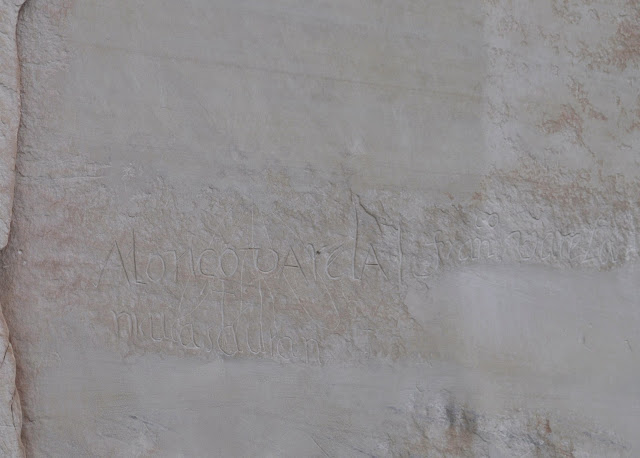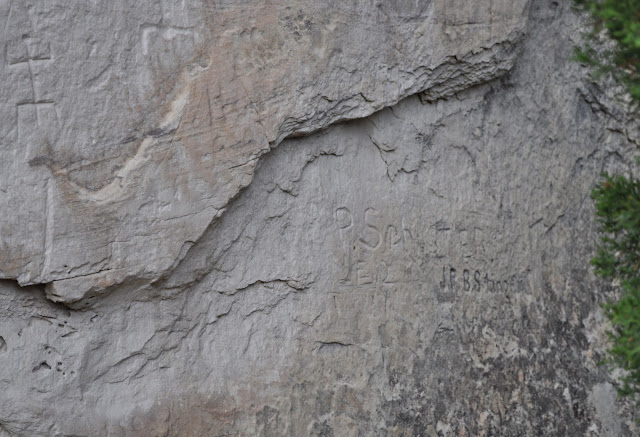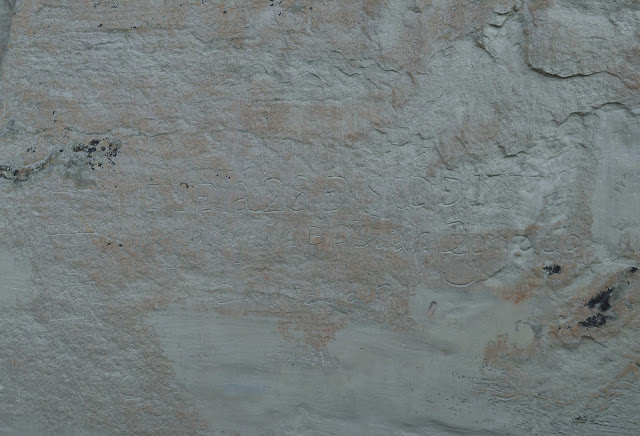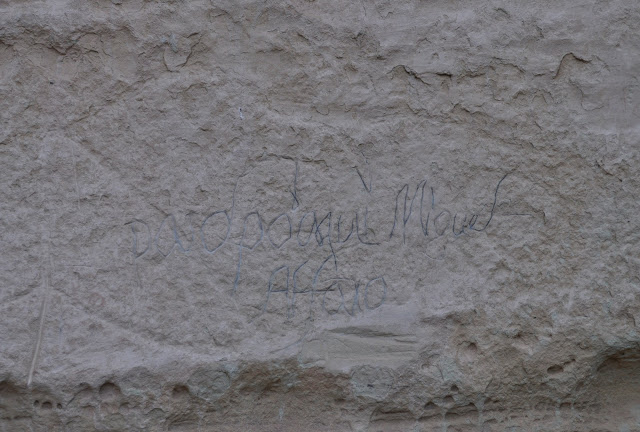El Morro National Monument is located on an ancient east-west trail in western New Mexico. The main feature of this National Monument is a great sandstone promontory with a pool of water at its base. As a shaded oasis in the western U.S. desert, this site has seen many centuries of travelers. The remains of a mesa top pueblo are atop the promontory where between about 1275 to 1350 AD, up to 1500 people lived in this 875 room pueblo. The Spaniard explorers called it El Morro (The Headland). The Zuni Indians call it "A'ts"ina" (Places of writings on the rock). Anglo-Americans called it Inscription Rock. Travelers left signatures, names, dates, and stories of their treks. While some of the inscriptions are fading, there are still many that can be seen today, some dating to the 17th century. Some petroglyphs and carvings were made by the Anasazi centuries before the Europeans started making their mark. In 1906, U.S. federal law prohibited further carvings.
Note: Remember, if you click on the photos they should be able to enlarge to see detail better.
Note: Remember, if you click on the photos they should be able to enlarge to see detail better.

















































